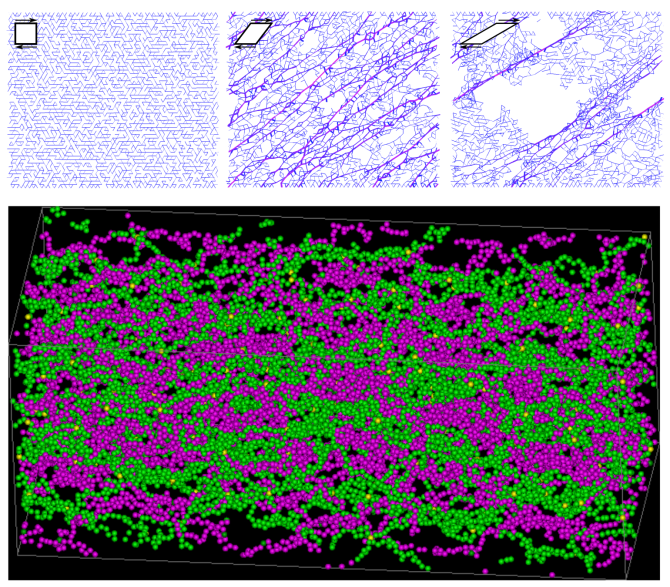Dare to fail: Modeling failure of polymer networks
Due to their underlying network structure, rubbers and gels can undergo enormous deformations before any type of failure occurs. This is in huge contrast with other materials such as concrete, that even fails upon a small deformation, and metals, which will deform irreversibly. In this project we study how the big deformations that can occur in polymer networks before failure influence their failure mechanisms. Studying failure is a challenge due to the divergent scales; Although we are interested in the properties of an entire material, the failure starts by breaking a bond between single atoms. In this project we strive to bridge these scales. We attack the problem bottom-up, starting with the physics that governs single polymer chains. From there, using computer simulations and theory, we build networks out of these single chains and investigate how multiple chains interact before, during and after failure. This allows us to study several unique properties of polymer networks that are highly relevant to their failure mechanisms such as the realignment of polymer chains, non-affine deformation, their subisostatic structure and the formation of force networks. Finally, we use the insights from studying these microscopic phenomena to explain and predict the failure we observe at the macroscopic scale.

Content of the thesis: A thesis within this project will cover either a specific material class e.g. biological fiber networks or a specific type of failure e.g. the brittle-to-ductile transition. Knowledge of theory regarding failure is not required, however it is advisable to have some background in soft matter physics (Driving Forces, Soft Matter and/or Advanced Soft Matter). The thesis requires at least some affinity with programming (e.g. python) or a high interest to learn this. Feel free to contact us if you are interested in this topic.
Methods & Concepts: Polymer Physics, Molecular/Brownian Dynamics, Random Spring Networks and Fiber Bundle Models.